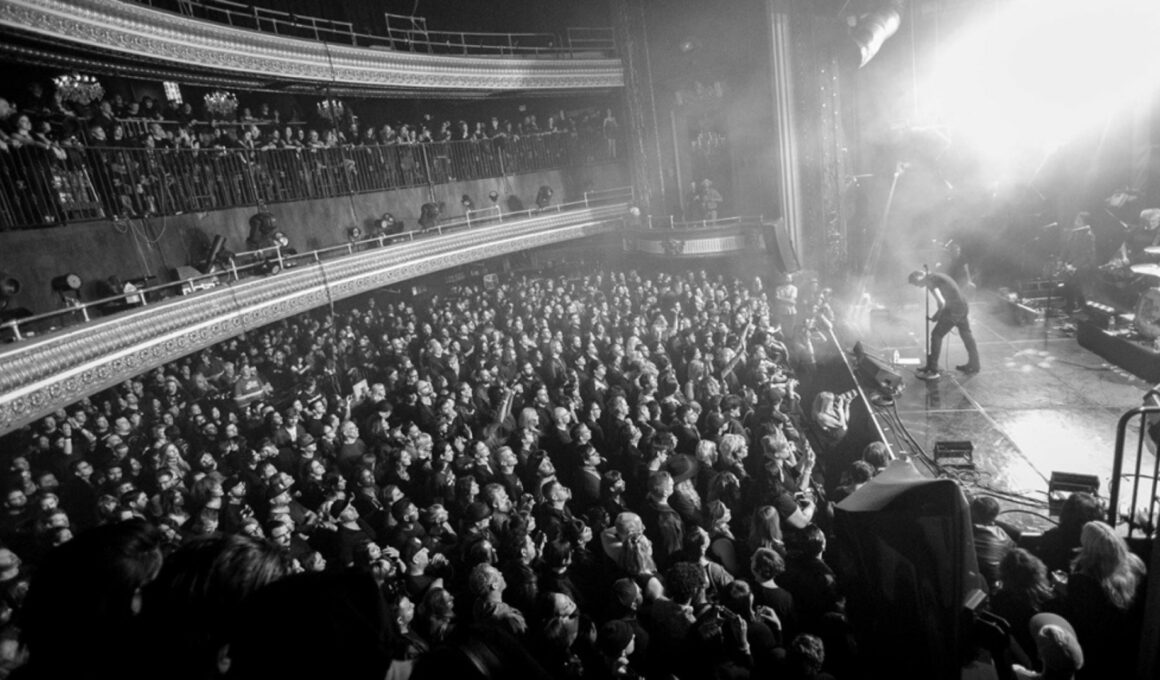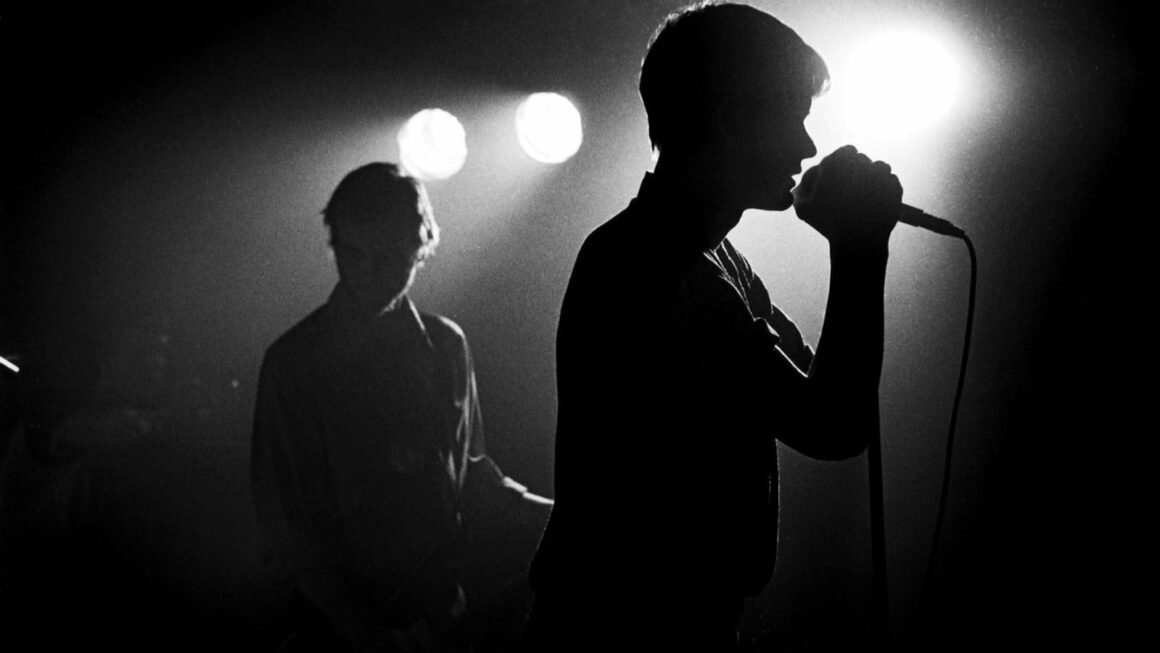
The Appeal of the Goth Cover
How Goth Bands Reinterpreted Iconic Rock Songs.
Goth covers of classic rock songs are hidden gems in terms of musical innovation. This trend came directly from Goth’s evolution from Post-Punk, which emerged when fans began to grow tired of Punk’s rebellion and looked for something more emotionally meaningful after Punk in turn had tried to simplify the outdated excesses of Glam Rock. Emerging from this medley were these Goth re-inventions that somehow managed to balance all the elements of the decades coming before them and reinvent them in a meaningful way. This made the Goth cover appealing during a time of great social flux and explains why it was actually a natural route for many of the artists of the era. Below we take a look back on five of our favourite covers, explaining what made them so special and why they still mean so much to Goth fans today.
01 | Bauhaus – Telegram Sam (Marc Bolan/T-Rex Cover)
Mark Bolan epitomised Glam Rock, and “Telegram Sam” was a fantastic rhythmic track including a killer riff and vocals to create something which had it all. Goth was in some ways a more understanded genre – yet more emotionally dramatic than the unabashed pomp of Glam Rock. Luckily, bits of both translated to Bauhaus’s cover. This allowed the band to let loose and create a driving force with the track’s main riff combined with ghostly, eerie howls, a classic drum breakdown and sweeping walls of sound. These kept the best parts of the dramaticism of Goth whilst also reminding listeners of Glam Rock in their sheer audacity.
02 | The Sisters Of Mercy – Gimme Shelter (Rolling Stones Cover)
The Rolling Stones took a large proportion of their inspirations from Blues, down to their intense, screamed vocals and rasp. The Sisters Of Mercy cover diverges differently from the original. It opens with tons of reverb and a slow, atmospheric riff. Instead of the piercing shrieks of Mick Jagger, deep vocals turn what is actually a short punchy Blues-Rock track into a deep unfathomable narrative. The circular nature of the track takes the moodiest, muddiest elements of Blues and applies Goth production to stretch them out into a fantastically gloomy extravaganza.
03 | Siouxsie & The Banshees – The Passenger (Iggy Pop Cover)
Iggy Pop’s iconic voice is an integral part of his music. So how did Siouxsie Sioux manage to reinterpret a track like ”The Passenger”? The key seems to have been about creating atmosphere with its jangling guitars, brassy synths and enigmatic androgynous vocals as opposed to the hardcore underground rebellion of Iggy Pop’s version. In this way, both versions of the song offered the allure of the underground, just very differently. With any subculture there is always the risk of rebellion itself becoming conformist – and this could be seen towards the tail end of the sixties when rock and roll was no longer as fresh and new acts on the scene had to find increasing ways to innovate in order to resonate with the youth of the era. Here, covering a slightly more Punk as opposed to Rock oriented act, meant that there was still considerable guaranteed audience appeal in terms of levels of rebellion. This eventually left plenty of room to take the creative risks that make the track so particularly special.
04 | The Cure – Foxy Lady (Jimi Hendrix Cover)
With The Cure’s cover of “Foxy Lady”, one of the biggest challenges for Robert Smith and Co. was the fact that they had to inevitably live up to such a stellar guitarist like Jimi Hendrix. Therefore, they instead took the best of their own style and used it to channel Hendrix’ spirit in short, muted guitar strums and bassist Michael Dempsey’s vocals. The rough and ready nature of the topline meant it evoked Hendrix wild onstage antics, even if in a more compact, controlled way. At under three minutes, the song delivers a burst of energy in a genre which is often more focused on mood. That way, the song even stands out amongst The Cure’s catalogue and therefore giving it the attention it deserves.
05 | Joy Division – Sister Ray (The Velvet Underground Cover)
Collaborating with sixties greats such as Andy Warhol and German singer Nico, The Velvet Underground made their name by being about as out of the box as you could imagine. Lou Reed never tried to fit in with the main counterculture of the sixties and instead saw his music as more of an outlet for artistic experimentation as opposed to something which captured the mood of an era. On the other hand, Joy Division created a pounding, rhythmic soundscape which allows listeners to get deeply immersed in the music for the effect it had on their emotions rather than the more abstract rebellion that was offered by the original. However, Goth’s ardent devotees were an open-minded bunch. This was a cover which could have eased them into Lou Reed’s work – especially notable at 04.40 and so on where the song goes into a dramatic artistic breakdown with a hypnotic, mesmerising effect. In the end, this is conjuring up both the atmosphere of Goth and giving a throwback to Reed’s unabashed experimentalism.
The Goth cover itself was brand new, so in some ways it might not have made sense for Goth bands to look to the past as opposed to innovating with their own music. Dedicated to carving out something completely originally, the bands of the Sixties and Seventies such as the Rolling Stones or The Velvet Underground represented a different era and a different kind of underground music.
However, taking songs by these acts and repurposing them meant that Goth bands could be seen as reclaiming the music of previous generations. Not only did their work offer an alternative for their fans who could just as easily have been the original supporters of Mick Jagger and Lou Reed – they were as capable of making a huge cultural impact as their forefathers, despite being much more underground and having stiffer competition as society relaxed and social norms became more open. This in itself, was a form of rebellion – especially at a period where everyone else was looking towards modernity and rejecting the sold ways of the Sixties.
Ultimately, music is about standing out and social identity. And this is a huge part of the appeal of subcultures and why they form. As a result, these covers created exactly this for their listeners both by keeping them in tune with the wider meaning of popular music and its history, as well as allowing for them to carve their own niche and show that the past could not only be re-imagined, but in their eyes improved upon.
Featured Image by Unliammedd









